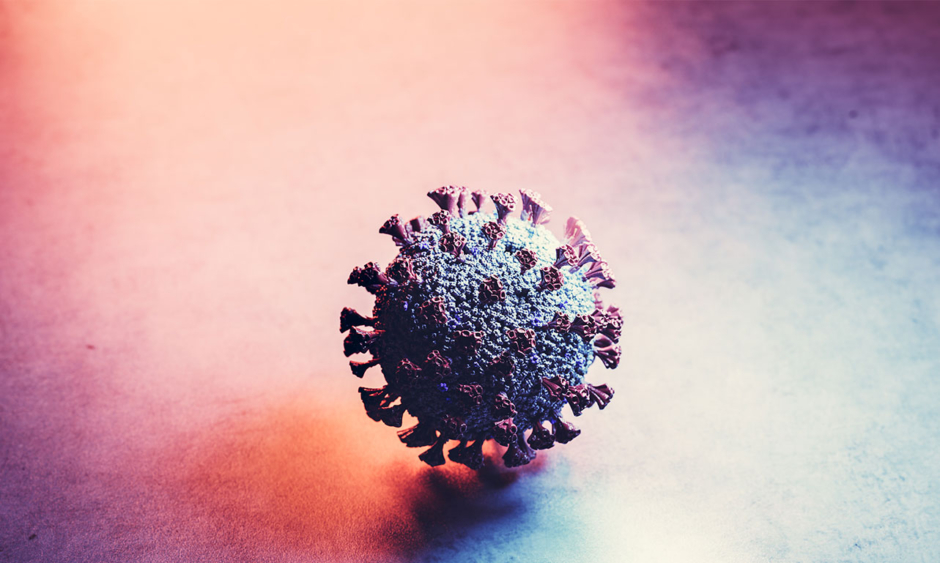DOMINATING headlines since January has been coronavirus and its global spread. Geographical knowledge has been sharpened by daily maps bleeding red further across borders, and the average person has become an expert on mortality counts, public health measures, and handwashing. But something is missing from the headlines: the incredible and unsung scientific efforts of laboratory scientists sequencing viral DNA, health economists and epidemiologists mapping disease spread and recommending public health measures, and clinicians on the frontlines caring for those affected, to name just a few. There is a global effort of public and private sectors stepping up to the challenge of this pandemic.
THE EMERGENCE OF COVID-19
Coronaviruses predominantly affect animals; however, they are capable of cross-infection in humans. First identified in 1966, in recent years coronaviruses have been responsible for two outbreaks: SARS-CoV (Betacoronavirus, subgenus Sarbecovirus) in 2002, and MERS-CoV (Betacoronavirus, subgenus Merbecovirus) in 2012.1
The current coronavirus outbreak is due to the severe acute respiratory syndrome coronavirus 2 (SARS-CoV-2), that causes the illness referred to as novel coronavirus disease 2019 (COVID-19). SARS-CoV-2 was first identified in December 2019 by analysis of bronchoalveolar lavage fluid samples from a cluster of patients affected by an acute respiratory illness in Wuhan, China. Genetic analysis of SARS-CoV-2 revealed it to be similar to SARS-CoV, within the genus Betacoronavirus; SARS-CoV-2 joins two bat-derived SARS-like strains in lineage B of the subgenus Sarbecovirus.1
In analysing the original HIV outbreak of the 1980s, it took more than 2 years for the culprit virus to be identified.2 Improvements to DNA sequencing technologies and progress in international scientific collaboration have led to the much more rapid recognition of SARS-CoV-2. Rather than being reliant on data from local cases, the open publication of data from the original cases in China has meant that a diagnostic test was developed and released within days.
TRANSMISSION
Two-thirds of the original reported 41 cases in Wuhan, China had direct exposure to the Huanan Seafood Wholesale Market where live animals are sold; this is believed to be the original point of animal-to-human transmission.3 SARS-CoV-2 is capable of human-to-human transmission via exposure to infected respiratory droplets, which is the driving force behind its pandemic spread.4 High-risk exposure occurs only in those having direct physical contact with infected cases, or contact within 2 metres of infected cases for greater than 15 minutes.4 The incubation period from exposure to the virus to development of symptoms has been recorded as 0–24 days, with a mean of five days5 although other studies report incubation is more likely 1–14 days.3
Transmissibility of a virus can be described through multiple measures, including R0. R0 describes how many unvaccinated people will catch the disease from one infected person. If the R0 is less than 1, the disease will decline and eventually disappear. If the R0 is greater than 1, the disease will grow exponentially and potentially cause a pandemic. The R0 for SARS-CoV-2 is estimated to be between 3 and 5. SARS-CoV associated with the 2002 epidemic had an R0 of 2–5, while measles has an R0 of 12–18.3
SARS-CoV-2 has been found to be easily inactivated by cleaning of contaminated surfaces for one minute with a solution of ethanol (62.0–71.0% alcohol), hydrogen peroxide (hydrogen peroxide 0.5%), or hypochlorite sodium (0.1% bleach).5 Frequent handwashing is an effective measure against the spread of the virus.
EPIDEMIOLOGY
Following recognition of the first cluster of cases in Wuhan, China in December 2019, new cases of COVID-19 have been identified in every continent. At the time of writing, international cases of COVID-19 exceed 110,000 with more than 4,000 deaths reported.6 Over 80% of those affected have mild disease, with fewer than 3% of cases affecting children.7
The speed of the global scientific effort tracking COVID-19 is unprecedented. China first announced affected cases of COVID-19 on 31st December 2019, identified the culprit virus by 9th January 2020, and released the genome sequencing for SARS-CoV-2 on 11th January. Details for a diagnostic test were published as a free, open-access resource for international use on 13th January.8 Whole genome sequencing was conducted on samples from cases in France on 24th January and revealed similarity to sequencing from China that confirmed both international spread and low mutation rate of the virus.9
Multiple factors have contributed to COVID-19 spreading at greater rates and in greater numbers than the SARS-CoV epidemic of 2002.10 Wuhan is a megacity and transport hub for much of central China, and the initial outbreak coincided with significant rates of travel for New Year celebrations. Initial measures tracked cases of pneumonia, with a delay in recognising the high rates of mild infections and delay in isolating these cases. A high proportion of mild cases also meant a greater number of cases were present and managed in the community, which posed greater difficulty for containment strategies. Additionally, the SARS-CoV-2 virus is transmissible during asymptomatic or mild disease, unlike the previous SARS-CoV where the infectious period of each case coincided with more severe symptoms.10
PUBLIC HEALTH BURDEN
Travel has been the determining factor for the international spread of COVID-19. Public health measures first focussed on addressing potential exposures from international movement. Computer modelling studies have suggested that travel restrictions successfully delayed international transmission by 2 weeks, with this impact strengthened by local public health interventions and behavioural modifications of individuals.11
Secondary infections, affecting close contacts of infected cases and healthcare workers, are an additional target of public health strategies. Rapid identification, isolation, and optimal care for infected cases helps reduce secondary infections. It is prevention of these cases that is addressed through use of screening diagnostic tests, community isolation measures, and personal protective equipment such as masks.
Public health measures, including contact tracing, population education, and dissemination of resources, are dependent on pre-existing infrastructure. Provision of personal protective equipment, diagnostic tests, and critical care technologies is a challenge in rural settings and low-income economies.12 Declaration of a Public Health Emergency of International Concern by the World Health Organization (WHO) on 30th January will allow for international support of vulnerable nations’ health systems and infrastructure.13
FUTURE TREATMENT AND VACCINE
No specialised treatment for COVID-19 has yet been identified and internationally validated. Current treatment for severe cases employs the use of existing antiviral therapies, and supportive respiratory and critical care treatments. Multiple open-access articles have been published discussing treatment strategies used by clinicians to address existing cases, with global peer review and analysis ongoing as more cases develop.
The process by which SARS-CoV-2 infects the respiratory system has been found to be similar to other viruses: receptor-mediated endocytosis via the angiotensin-converting enzyme II (ACE2) as an entry receptor.5 Recognition of this entry process allows for production of targeted drug therapies, with multiple therapies already under development. Whole genome sequencing of the virus also contributes to the ability of research institutions and private companies to create targeted treatments or potential vaccines. However, any new therapy or vaccine developed must undergo rigorous testing in clinical trials to have confidence in its safety and efficacy, so is likely over a year away from global availability.
GLOBAL SCIENTIFIC COMMUNITY
Transparency of research, shared data and insight, and supportive spirit have been hallmarks of the global scientific response to COVID-19. Greater numbers of scientific journals now provide for early, free dissemination and real-time global peer review of research and insights. This has been utilised in tackling the COVID-19 pandemic to support rapid growth of knowledge and foster collaborative work across institutions internationally.
“It feels like things are transitioning to a completely new culture of doing research,” said virologist Isabella Eckerle of the Geneva Centre for Emerging Viral Diseases, Geneva, Switzerland, “It’s exciting.”14 A PubMed search for COVID-19 or SARS-CoV-2 reveals 360 articles; the majority are open-access, free publications from scientists and clinicians across the world supporting the global effort to combat this pandemic. During the SARS-CoV outbreak in 2002, it took a year for one-third of that number of publications to be released.2
Historical efforts have built an invaluable foundation of knowledge, technology, and scientific techniques that have been vital to the success of the current response. Rapid whole-genome sequencing of the virus was possible due to original recognition of DNA structure in the 1950s, development of sequencing machines in the 1980s, and exponential leaps in processing speeds and sequencing technology over the last two decades.15 Artificial intelligence has been used to predict molecular targets for potential treatment and vaccine pathways.6 More than 80 clinical trials are currently underway to assess the effect of using pre-existing antiviral treatments against SARS-CoV-2.16
Viral genome sequencing tends to take days to weeks, however laboratories around the globe ran analyses during the night and through weekends to provide data for global efforts as quickly as possible.3 Editorial assessment and peer review of scientific research can take months, but many international journals have pushed to release articles within days of submission to contribute to the global body of knowledge.14 A WHO forum in early February saw 400 scientists generate a research roadmap to direct collaborative and parallel research efforts for the international scientific community.17
Contributors to every aspect of the scientific process have acted with unprecedented speed and transparent collaboration over the past three months. The COVID-19 challenge has allowed us a glimpse into the future of global scientific research, and highlighted the power of the shared efforts of the global scientific community.







